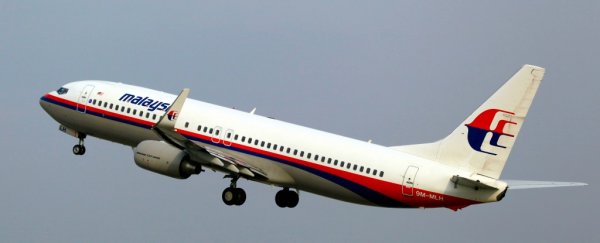On 8 March, 2014, Zaharie Ahmad Shah radioed air traffic controllers, "Good night, Malaysia," as the Boeing 777 he was piloting left the country's airspace. A short time later, he and the 250 foot (67 metre) plane disappeared.
By daybreak, Zaharie and the 238 other people on MH370 would be at the center of the biggest airplane mystery since the disappearance of Amelia Earhart.
Authorities may never know the answers to crucial questions about what happened after that final communication:
Why did the plane end up thousands of miles off course? Who switched the transponder off, preventing anyone from tracking the aircraft? And why was there never a mayday message or a final phone call or a desperate text from a panicked passenger?
But on Monday, authorities in Malaysia conceded that they do know one thing about the final hours of flight MH370:
Inside the plane, someone was in control.
After four years spent scouring every available detail about the final moments of the Beijing-bound flight, investigators in Malaysia determined that the plane's disappearance was not caused by a mechanical or computer malfunction.
Some person, the investigation concluded, was responsible for the plane veering off course - a direction change that doomed all 239 people aboard.
"The change in flight path probably resulted from manual inputs," the government's report said.
A system malfunction alone could not account for sudden shifts in the direction of the plane.
Investigators with the Australian Transport Safety Bureau have said that everybody on the plane - the captain, his co-pilot, the passengers and crew - was unconscious as the uncontrolled craft ran out of fuel and plunged into the Indian Ocean.
The Malaysian investigation now says that someone controlled the craft for at least some of the time after Zaharie's goodbye.
Still, Malaysian investigators said they have no way of determining who that person was - especially because the plane and most of its wreckage have not been found.
The culprit could be the pilot or the co-pilot - or "unlawful interference" from one of the other 237 people onboard who managed to get into the cockpit and wrest control from the plane's operators, Kok Soo Chon, head of the MH370 safety investigation team, said at a news conference Monday.
"We are not of the opinion it could have been an event committed by the pilots," Kok said. But he added that they are not ruling out any possibility.
The notion that a person was behind the disappearance, of course, is head-slappingly obvious to scores of investigators and conspiracy theorists who have opined on the fate of MH370.
Zaharie and co-pilot Fariq Abdul Hamid were prime suspects in the plane's disappearance from the beginning, according to news.com.au.
Although both have been cleared by the Australian government's investigation, there were rumors that Zaharie's marriage was falling apart and that he downed the plane after learning that his wife was about to leave him, the news site said.
And Zaharie is also at the center of a chilling theory posited by a team of experts gathered by the news show "60 Minutes: Australia".
The show's experts claim a suicidal Zaharie put on an oxygen mask and depressurized the Boeing 777, rendering everyone else unconscious from a lack of oxygen - and helpless to interfere with his fatal plot.
The modern aircraft tracked by satellites and radar disappeared because Zaharie wanted it to, the experts said. And the veteran pilot, who had nearly 20,000 hours of flight experience and had built a flight simulator in his home, knew exactly how to do it.
For example, at one point, he flew near the border of Malaysia and Thailand, crisscrossing into the airspace of both, Simon Hardy, a Boeing 777 senior pilot and instructor, said on "60 Minutes". But neither country was likely to see the plane as a threat because it was on the edge of their airspace.
Zaharie's suspected suicide might explain an oddity about the plane's final flight path: that unexpected turn to the left.
"Captain Zaharie dipped his wing to see Penang, his hometown," Hardy said. "It might be a long, emotional goodbye. Or a short, emotional goodbye to his hometown."
Zaharie's family members have defended him and said they were glad the official investigation cleared him of blame.
There are other theories. Some have claimed that Zaharie hijacked the plane to protest the jailing of Anwar Ibrahim, who was then the opposition leader in Malaysia, or that it was an act of terrorism.
A shadowy group called the Chinese Martyrs' Brigade has also claimed responsibility for the downing, although skeptical officials called this a hoax.
Two men on the plane were flying with phony passports, but one was apparently an asylum seeker, authorities said, and neither had terrorism links.
But all those theories - the ones by professional investigators, family members of victims and conspiracy theorists alike - lack the same thing: evidence.
There have been two official investigations that cost hundreds of millions of dollars. But only scattered pieces of wreckage have been found.
"Basically it's the same as everything else that's happened with this particular flight," Sara Norton, whose brother, Paul, died on the flight, told New Zealand news website stuff.co.nz in May about the competing theories.
"It's all assumption and supposition and opinion."
2018 © The Washington Post
This article was originally published by The Washington Post.
